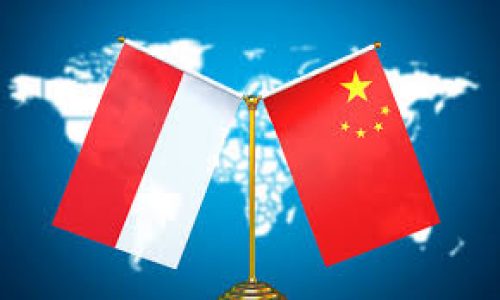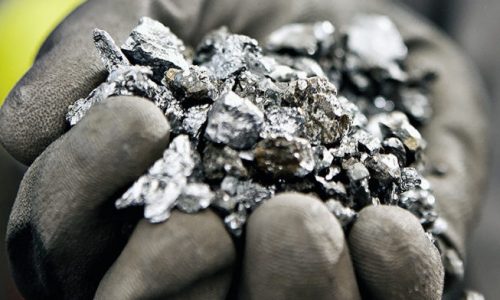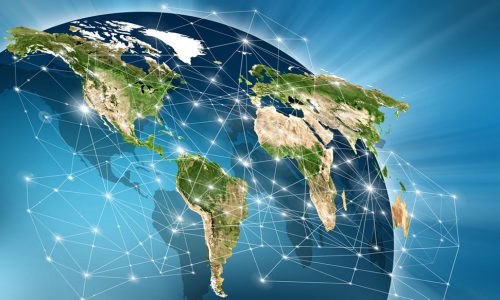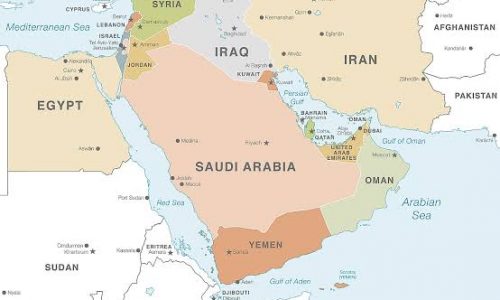By Nikolaus Loy, a lecturer on international relations at the UPN Veteran University. Yogyakarta
The running mate of presidential candidate Prabowo Subianto, Gibran Rakabuming Raka, shared his vision during a vice presidential debate on January 21, 2024 that the Prabowo-Gibran pair would continue with downstreaming and industrialization of the administration of outgoing President Joko Widodo. However, one challenge facing the next president is deindustrialisation of the Indonesian economy. If the president wants to sustain economic growth and provide employments, industrial growth is key. And Prabowo should boost industrial growth if he is sworn in as the new president this October.
Deindustrialization
Deindustrilisation, in simple terms, is defined as the decline of industrial growth in a region or country. The decline is characterized by the declining contribution of the industrial sector in a country’s gross domestic product. Another sign is the declining percentage of industry in a country’s total exports.
The impact of extreme de-industrialization is a decrease in the supply of jobs. Since there is no new industry growth or even minus growth, new jobs are not added.
The causes of deindustrialization differ from case to case. In advanced industrialized countries, such as the US, deindustrialization occurs either due to industrial relocation or globalization of production.
So, the first cause occurs when a company moves a factory to a production site outside of its home country, for example from the US. The second is when the company no longer makes all the components, but goes into production by combining components produced in a global production network.
These moves are driven by several factors such as rising labor wages in the home country, the desire to get closer to markets, sources of raw materials and cheap labour in the destination country.
Favorable incentive policies offered by destination country governments also encourage relocation. Tax holiday incentives and low labor wages, for example, encourage the movement of Japanese and US companies to Vietnam or to Indonesia.
Another cause is the closure of industries due to domestic market liberalization. Industries that previously lived in a protected market were unable to survive in the face of new, more efficient types of industries that entered thanks to import and investment liberalization.
Infant industries have been living with strict government protection. When the protection was removed, they were unable to compete with new players in the domestic market.
In Indonesia, the disappearance of several electronic and household products such as Maspion after the liberalization policy from 1998 is a case in point. Likewise, the closure of the Texmaco truck industry, which had produced military trucks for the TNI.
In the US, starting in the 1980s, the influx of more fuel-efficient and cheaper Japanese cars forced Ford to reorganise its production network.
Globalisation of production is another factor. Fierce competition in the global market has led companies to look for other production efficiencies and profits. This was done by developing a global production network.
Before the 1980s, a product was made in its home country, then exported to other countries. Then, in the early 1980s, ‘off shore production’ developed. In this model, companies moved factories overseas or developed sub-contracting systems to companies in other countries. The sub-contracting model, for example, was applied in the apparel and footwear industries such as Nike shoes.
Today the production model, particularly in the high-tech industrial sector, is changing completely. In the automotive industry, car production takes place in a global network that focuses on different production levels.
A Toyota car, for example, is made up of approximately 3,000,000 components. Car parts are no longer made in the brand’s home country, but are left to branch factories or supplier factories in different countries.
Therefore, what is pursued is the value chain. For the Asian market, for example, Toyota combines chassis, rubber, kopkit panels, tyres, engines, seats made in different locations. What is pursued is efficiency and added value.
Indonesia: Symptoms of deindustrialization
The process of deindustrialization in the Indonesian economy is still a matter of debate. Some analysts argue that the growth of other sectors, such as financial services and information technology, has reduced the size of industry’s contribution to GDP.
Thus, amidst the globalization of the services sector, in particular, finance and information technology, investments in these two sectors are much faster to return.
Profit margins are also high while the manufacturing industry requires a longer investment process. Therefore, companies tend to enter the services and information sectors, which is reflected in the rising contribution of these two sectors to national economic growth.
Some data indicate early signs of deindustrialization. BPS reports that the contribution of manufacturing industry in GDP continues to decline.
In 2014, manufacturing accounted for 21.6 percent of GPD, but will remain at 18.34 percent in 2022 (https://www.cnbcindonesia.com). Industry’s share in GDP has been rising since 1961 and peaked at 26 percent in 1997, but has continued to decline until recently (https://datanesia.id/).
The manufacturing industry also experienced a decline in growth from 4.61 percent in 2014, to 4.27 percent in 2018. While the growth of manufacturing industry is declining, the contribution of manufacturing exports in exports is reported to have increased. For example, in 2021, manufacturing exports surged above 50 percent of Indonesia’s total exports.
The increase needs to be examined historically over a span of time, for example, whether over the last 10 years the trend in manufacturing exports has continued to increase or vice versa. It is likely that the increase was largely contributed by exports of vegetable oil and agro-based processed products such as CPO and processed coffee.
The trend towards deindustrialization is also indicated by the growth of the informal sector. Statistics Indonesian(BPS) reported that in 2020, the formal sector employed 43.36 percent, while the informal sector 56.64 percent. In 2021, formal workers fell to 40.38 percent, while informal workers rose to 59.62 percent (ekonomi.bisnis.com).
The decline in formal sector workers occurred because there was no expansion of the formal economy, of which the manufacturing industry is an important component.
To be safe, we can say that Indonesia is experiencing symptoms of early deindutrialization. What is the cause? There are several possible answers.
First. The liberalization of the economy since the fall of Soeharto has led companies that could not compete to close factories.
Second. One promise of liberalization was a surge in new investment, particularly in the manufacturing sector. This did not happen because other countries also opened their economies to foreign investment. This openness is supported by generous incentives, easy licensing, low corruption.
Investors, on the other hand, complain of an unfriendly investment climate in the form of bureaucratized licensing, illegal levies and other additional costs.
Jokowi’s reform of the investment regime seems to have succeeded in eliminating predatory behaviur in institutions that manage investment. Local land policies, for example, also create disincentives to new investment in the manufacturing sector.
The phrase ‘the chicken hasn’t laid an egg yet’ illustrates the phenomenon. This condition occurs in the midst of the development of a ‘competition state’, where countries are aggressively competing to provide facilities to ‘persuade’ global investment into their countries.
The phenomenon of ‘footloose capital’ has also contributed to the stagnation of manufacturing growth. The financial market has been very liberalized.
Portfolio investment in stocks, futures, bonds is obviously much more attractive than manufacturing which has greater risks and longer procedures. Not to mention the other barriers mentioned earlier.
Finally, there is the economic leapfrog. In many countries, the economy develops from the agrarian stage, the manufacturing sector, the service sector and then the ‘leisure’ industry, especially tourism. Our economy leapfrogged from agrarian to the ‘leisure industry’.
Tourism is growing at a rapid pace. This is not a bad thing. The government’s big push into tourism, through the development of premium tourist destinations’ has made investors more interested in entering the sector, rather than setting up new processing plants.
Challenge of the new president: Reindustrialization
Preventing premature deindustrialization is one task of the new president. Policies that encourage reindustrialization are a must. There are several challenges at hand.
Firstly, the liberalized global economic environment. Industrial success in East Asia, such as Japan, Taiwan and South Korea began in the 1970s when mercantilist economic ideology was strong.
The real form was a strong protectionist policy. At that time, car industries such as Toyota, Honda, Suzuki in Japan; Hyundai and KIA in Korea were heavily protected from foreign competitors.
Likewise, electronics industries such as Japan’s Sony and Toshiba; Samsung and Lucky Gold Star (LG) in Korea. The result is that they grow strong domestically, and then expand internationally.
The new president cannot adopt the same policies. The global economic ideology is neo-liberal and Indonesia is part of it.
Protection requires discrimination against the international to protect the national. As a WTO member, a discriminatory national treatment policy would violate the ‘trade related to investment’ agreement, which requires fair treatment. Indonesia could be sued by other countries if it applies protection. Other countries can also retaliate with the same measures.
The failure to develop a national car is an example of how protection and other special treatment cannot be applied in a liberalized economic environment.
Therefore, at the end of Soeharto’s rule, Indonesia tried to establish a national car brand ‘Timor’ with special treatment. Cars were imported as a whole from Korea at low tariffs. Japan threatened to challenge this policy to the WTO panel.
The government eventually cancelled the national car project. The case of the Esemka car, which was promoted by Jokowi when he was running for president, is another case. The rhetoric of a national car is actually more of a political campaign than a serious policy. How can Esemka compete with Honda, Toyota, Ford and others if there is no protection and special treatment.
Second, reindustrialisation requires a unified and coordinated policy line. A vertically and horizontally decentralised political system results in lengthy and complex policy coordination.
Companies have to go through many ‘desks’ at the center, and ‘cascading desks’ from the centre to the regions. Reforming the licensing bureaucracy does not seem to have addressed this issue.
The government’s move to pull back some licences to the center represents President Jokowi’s frustration with bureaucratic barriers to new investment.
Not to mention, the fragmented political system creates lobbying and pressure from very diverse interest groups. The new president will have to ‘row’ between these various interest groups.
Conclusion
Reindustrialization is a necessity. Without this, Indonesia’s economy will be locked back into extractive sectors such as coal and oil and gas. Aside from the environmental impact, these two sources need to be saved for long-term energy security.
The potential of the agricultural sector is large, but the prices of agricultural commodities have low added value and their prices on the international market are very volatile.
Thus, reindustrialization should be the ‘main road’, not the ‘footpath’ for Indonesia’s economy to become an ‘Asian tiger’, as Prabowo promised in the 2019 election.









